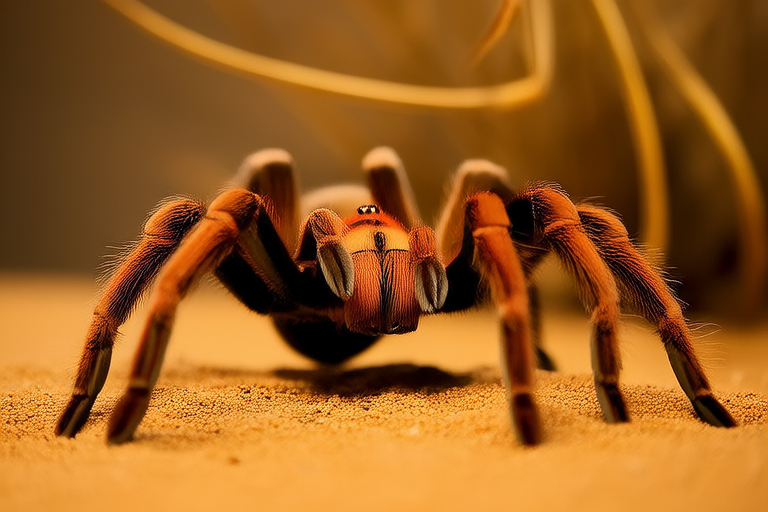Chilean Rose Tarantulas Uncovered: Myths vs. Facts
Introduction
The Chilean Rose Tarantula (Grammostola rosea) is one of the most popular species of tarantulas among hobbyists and enthusiasts. Known for its vibrant pinkish hue when young and its docile nature, this spider has gained significant attention in the pet trade. Despite its growing popularity, many myths surround these arachnids, often leading to misunderstandings about their behavior, care requirements, and overall suitability as pets. This article aims to separate fact from fiction, providing you with reliable information to help you make informed decisions if you’re considering owning a Chilean Rose Tarantula.
Common Myths
Myth 1: All Tarantulas Are Aggressive
One common misconception is that all tarantulas are aggressive. While some species can be defensive and may bite if provoked, the Chilean Rose Tarantula is generally considered one of the more docile species. They prefer to flee rather than fight, making them less likely to attack unless severely threatened.
Myth 2: Tarantulas Will Always Bite If Provoked
Another myth suggests that any interaction with a tarantula will result in a bite. However, this is far from true. Tarantulas typically only resort to biting as a last defense mechanism. They have other means of protection, including urticating hairs on their abdomen, which they can flick off at potential threats.
Myth 3: Tarantulas Are Highly Poisonous
Many people fear tarantulas due to their perceived toxicity. In reality, the venom of a Chilean Rose Tarantula is relatively mild and comparable to that of a bee sting. While it can cause localized pain and swelling, it is not life-threatening to humans.
Myth 4: Tarantulas Can Grow Without Limits
Contrary to popular belief, tarantulas do not grow indefinitely. Once they reach adulthood, their growth ceases. The Chilean Rose Tarantula, like other tarantulas, undergoes several molts before reaching its full size, usually around 4-6 inches in leg span.
Scientific Facts
Natural Habitat
Native to the Atacama Desert in Chile, the Chilean Rose Tarantula thrives in dry, arid environments. Their natural habitat consists of rocky areas and desert scrublands where they seek shelter under rocks or burrow into the ground. Understanding their native environment helps in creating suitable living conditions for them as pets.
Dietary Needs
Chilean Rose Tarantulas are carnivorous and primarily feed on insects such as crickets, mealworms, and occasionally small vertebrates. It’s important to ensure that their diet includes a variety of prey items to meet their nutritional needs. Feeding them once every week or two is sufficient, depending on the size and age of the spider.
Lifespan
These spiders have relatively long lifespans compared to many other arachnid species. Females can live up to 20 years, while males typically live between 5 to 8 years. Proper care can significantly extend their lifespan, making them a rewarding long-term pet.
Molting Process
One of the most fascinating aspects of tarantula biology is their molting process. During this time, they shed their exoskeleton to allow for growth. Owners should be aware that during molting, tarantulas become very vulnerable and require minimal disturbance. Providing a humid environment and avoiding handling during this period is crucial for their health.
Care Tips
Housing
A proper enclosure is essential for the well-being of your Chilean Rose Tarantula. A terrarium with a secure lid is ideal, ensuring adequate ventilation while preventing escapes. The size of the enclosure should be proportional to the size of the spider; a 10-gallon tank is suitable for adults. Adding substrate such as coconut fiber or bark chips provides a natural environment and aids in humidity regulation.
Temperature and Humidity
Maintaining appropriate temperature and humidity levels is critical. A daytime temperature range of 75-85°F (24-29°C) and nighttime temperatures slightly cooler are recommended. Humidity should be kept between 50-70%, which can be achieved through regular misting or the use of a humidifier.
Handling
While Chilean Rose Tarantulas are generally docile, it’s important to handle them carefully. Always support their body and legs gently, avoiding sudden movements that might startle them. Frequent handling isn’t necessary, but occasional gentle interactions can help build trust between you and your pet.
Health Monitoring
Regularly observe your tarantula for signs of illness or distress. Look out for abnormal behaviors, such as refusal to eat, unusual webbing patterns, or changes in activity level. Prompt veterinary care from a specialist in exotic animals can address any health issues early.
Conclusion
By understanding the myths and facts surrounding Chilean Rose Tarantulas, you can make informed decisions about whether they are the right pet for you. These fascinating creatures offer a unique opportunity to learn about arachnid biology and behavior. Remember, responsible ownership involves providing the best possible care, ensuring their habitat mimics their natural environment, and being attentive to their health and well-being. With the right knowledge and commitment, owning a Chilean Rose Tarantula can be an enriching experience.
